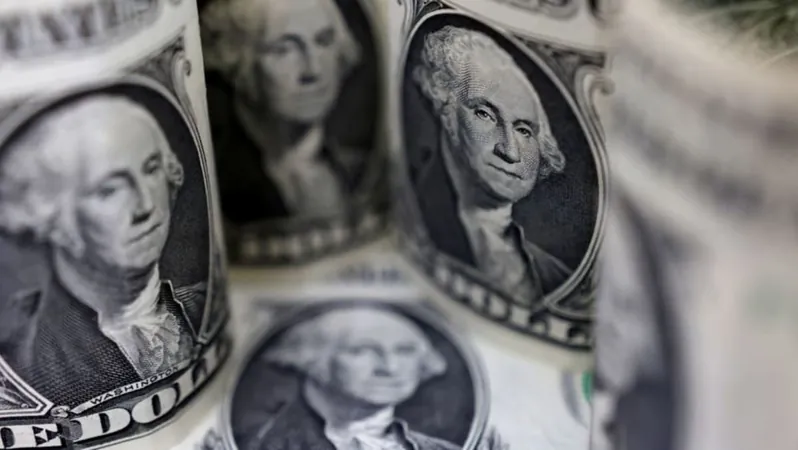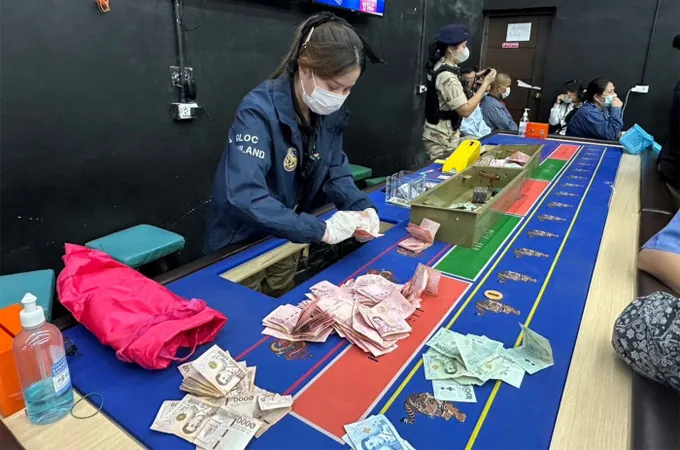
Dollar Soars Amid Positive U.S. Business Reports and Tariff Flexibility Hints!
2025-03-24
Author: Nur
In a striking turn of events, the U.S. dollar surged to multi-week highs against both the euro and yen on Monday, fueled by encouraging data that indicated a rebound in U.S. business activities during March. The upbeat sentiment was further amplified by reports suggesting that President Donald Trump might adopt a more flexible approach regarding impending tariffs, alleviating some market fears.
Bitcoin, often seen as a barometer for risk appetite, also witnessed significant gains, soaring to $88,772—the highest level since March 7. This uptick reflects a growing risk-on sentiment among investors as they react positively to the recent business activity data.
The S&P Global's flash U.S. Composite PMI Output Index, which gauges the pulse of the manufacturing and services sectors, climbed to 53.5 this month, up from 51.6 in February. This score indicates expansion, with any reading above 50 suggesting growth in the private sector. The increase primarily stemmed from the services sector, benefiting from milder weather as spring approaches. However, the manufacturing sector stumbled back into contraction after two months of gains, raising concerns about its stability.
Adam Button, chief currency analyst at ForexLive, shared his insights: “The services sector is a key component of the U.S. economy, so this news is certainly a positive signal." He emphasized that confidence in this sector can significantly influence overall economic performance.
The dollar's rise against the yen earlier in the day was influenced by reports from Bloomberg News and the Wall Street Journal, indicating the Trump administration's possible exclusion of some sector-specific tariffs while preparing to impose reciprocal tariffs by April 2. Market strategist Karl Schamotta noted, “A wave of cautious optimism is sweeping through the foreign exchange markets, with hopes that the upcoming tariff announcements will be less severe than initially feared.”
Nevertheless, traders remain hesitant to make significant moves, given the potential for retaliatory measures from major trading partners. Schamotta warned that while the dollar has recently advanced, the overall volatility in currency markets is likely to persist as concerns over the global economic impact of these tariffs loom large.
Previously, the dollar had faced downward pressure as fears grew over the implications of Trump's protective trade policies. Notably, Trump had proposed imposing automobile tariffs of approximately 25% and similar duties on semiconductors and pharmaceutical imports. Following significant lobbying from the three largest U.S. automakers, he later deferred certain auto tariffs, revealing the complexities surrounding trade negotiations.
Meanwhile, the euro dipped by 0.09 percent to $1.0804, reaching lows of $1.079—the weakest point since early March. Despite robust euro zone business activity growth hitting its highest in seven months, a recent easing in the manufacturing downturn has been unable to prevent the euro's decline as anticipation builds around Germany's fiscal policy changes and the ratification of the debt brake bill.
The British pound also experienced a slight increase, trading up 0.09 percent to $1.2926 ahead of key updates from British finance minister Rachel Reeves regarding the spring budget, stirring expectations of fiscal changes.
In other global currency dynamics, the Turkish lira saw marginal weakness as political unrest unfolded: Mayor Ekrem Imamoglu, a significant political adversary of President Tayyip Erdogan, was jailed pending corruption charges—a situation he vehemently denies. The lira recently teetered at record lows amidst new policies from Turkey's central bank that have raised interest rates substantially.
Furthermore, the international community is closely monitoring ongoing discussions on a potential ceasefire in the Black Sea region, as U.S. and Russian officials meet in Saudi Arabia, with implications that could resonate through global markets.
As investors digest these developments, the landscape appears increasingly unpredictable, with the dollar maintaining its spotlight amid shifting economic narratives. Stay tuned as we continue to follow this evolving story!



 Brasil (PT)
Brasil (PT)
 Canada (EN)
Canada (EN)
 Chile (ES)
Chile (ES)
 Česko (CS)
Česko (CS)
 대한민국 (KO)
대한민국 (KO)
 España (ES)
España (ES)
 France (FR)
France (FR)
 Hong Kong (EN)
Hong Kong (EN)
 Italia (IT)
Italia (IT)
 日本 (JA)
日本 (JA)
 Magyarország (HU)
Magyarország (HU)
 Norge (NO)
Norge (NO)
 Polska (PL)
Polska (PL)
 Schweiz (DE)
Schweiz (DE)
 Singapore (EN)
Singapore (EN)
 Sverige (SV)
Sverige (SV)
 Suomi (FI)
Suomi (FI)
 Türkiye (TR)
Türkiye (TR)
 الإمارات العربية المتحدة (AR)
الإمارات العربية المتحدة (AR)